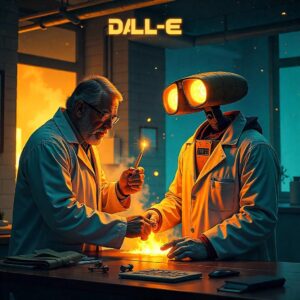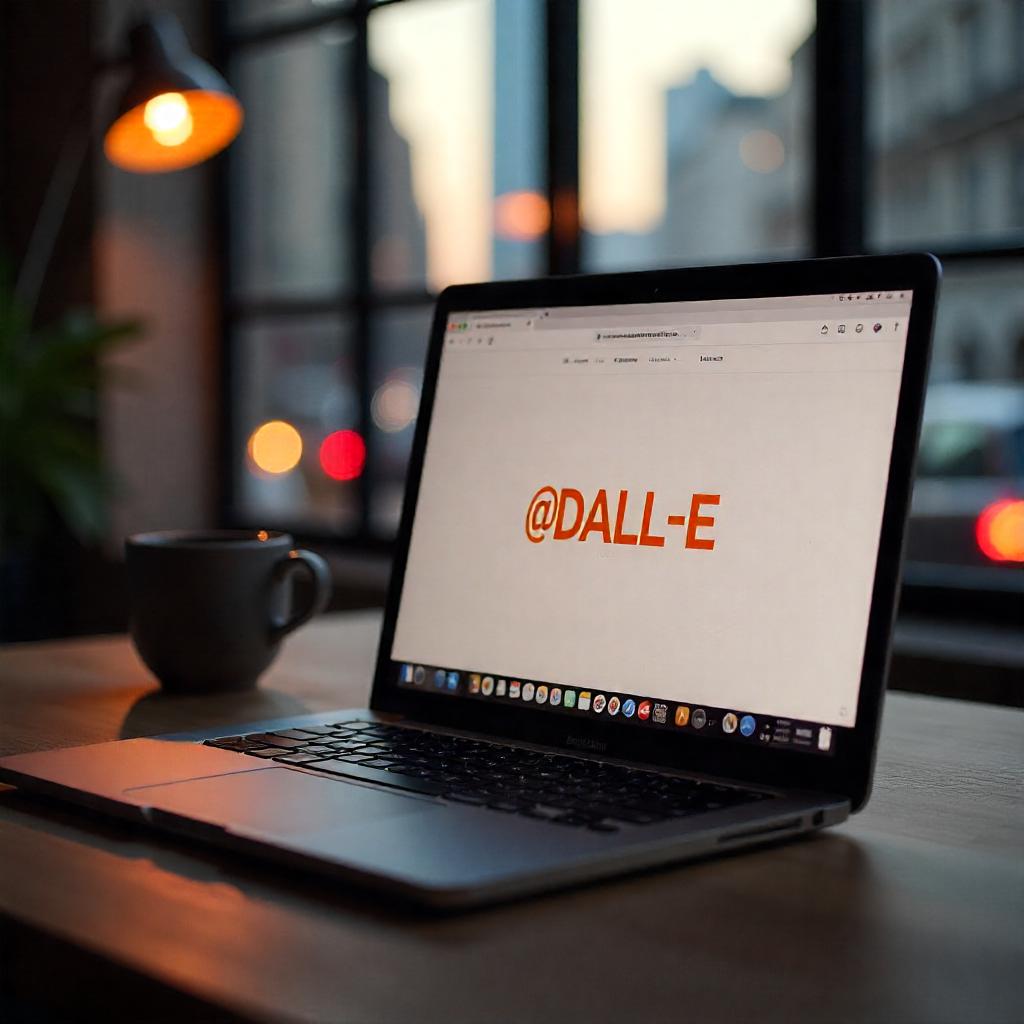Introduction
In recent years, artificial intelligence (AI) has transformed various industries, with remarkable advancements in the field of image generation. One of the most notable breakthroughs has come from OpenAI with its model DALL-E. This innovative system can create images from textual descriptions, showcasing an unprecedented level of creativity and understanding. This article delves into the technology behind DALL-E, its applications, ethical considerations, and its potential future impact on various sectors.

What is DALL-E?
DALL-E is an AI model developed by OpenAI, based on the architecture of GPT-3, which is primarily known for its natural language processing capabilities. The model’s name is a clever combination of the surrealist artist Salvador Dalí and the animated robot character WALL-E from Pixar. DALL-E’s mission is to generate images that correspond to detailed textual descriptions, effectively bridging the gap between language and visual representation.
How DALL-E Works
DALL-E operates through a process known as transformer architecture, which allows it to understand and generate text and images. The model has been trained on a diverse dataset containing millions of images paired with textual descriptions. This training enables DALL-E to learn the relationships between words and visual elements, allowing it to create coherent and contextually relevant images based on user inputs.
Key Features
- Image Generation from Text: DALL-E can produce unique images based on specific prompts. For example, if a user requests “an orange cat wearing a wizard hat,” DALL-E generates an image that visually represents that concept.
- Creative Variability: Unlike traditional image generation tools that may rely on existing templates, DALL-E combines concepts in novel ways. This creative variability means it can generate images that are not only new but also imaginative, blending different artistic styles or themes.
- Diverse Artistic Styles: DALL-E can emulate various artistic styles, from classical paintings to modern digital art, allowing users to specify the kind of aesthetic they desire in the generated images.
- Adaptability: The model can adapt to different contexts and nuances in language, enabling it to create images that align closely with the intended meaning of the prompt, even when the descriptions are abstract or metaphorical.

Applications of DALL-E
DALL-E’s capabilities have led to its adoption across various fields, showcasing its versatility and potential to revolutionize multiple industries. Here are some of the most prominent applications:
1. Graphic Design
In the realm of graphic design, DALL-E has emerged as a powerful tool for designers. It allows for rapid prototyping of visual concepts, enabling designers to quickly generate ideas without the need for extensive manual work. For instance, a designer can input a prompt like “a minimalist poster for a jazz concert featuring a saxophonist” and receive several unique designs within moments. This accelerates the creative process and fosters innovation.
2. Advertising and Marketing
The advertising industry has also embraced DALL-E for its ability to create eye-catching visuals. By generating custom images tailored to specific campaigns, marketers can produce unique content that captures audience attention. For example, a campaign promoting a new eco-friendly product could use DALL-E to create visuals that reflect sustainability themes, such as “a futuristic city with green technology.” This capability not only enhances creativity but also saves time and resources.
3. Entertainment and Media
In the entertainment sector, DALL-E can be used to visualize concepts for films, video games, and animations. Creatives can generate character designs, settings, or storyboards based on descriptive prompts, streamlining the pre-production process. For example, a filmmaker might request “a dragon flying over a medieval castle at sunset,” and DALL-E can produce stunning visuals that help bring the concept to life.
4. Education and Training
DALL-E’s image generation capabilities can significantly enhance educational materials. Educators can create custom illustrations that visualize complex concepts, making learning more engaging. For instance, a science teacher might generate images of “the solar system with planets labeled,” providing students with visual aids that enhance understanding. Additionally, DALL-E can be used in training simulations, where realistic images are needed for immersive learning experiences.

5. Fashion and Product Design
The fashion industry can leverage DALL-E to conceptualize new clothing lines, accessories, and product designs. Designers can input prompts like “a summer dress with floral patterns and vibrant colors,” and DALL-E can generate visual representations that inspire the actual design process. This application allows for rapid iteration and exploration of creative ideas.
6. Art and Creativity
Artists can use DALL-E as a source of inspiration or as a collaborative tool in their creative process. By generating unique images based on prompts, artists can explore new styles and concepts that they may not have considered otherwise. For example, an artist might request “a surreal landscape with floating islands and waterfalls,” using the generated image as a starting point for their artwork.
Ethical Implications
While DALL-E presents exciting possibilities, it also raises important ethical questions. The ability to generate realistic images from text can lead to potential misuse and ethical dilemmas. Here are some key considerations:
1. Copyright and Ownership
The question of copyright arises when images are created by AI. Who owns the rights to an image generated by DALL-E? Is it the developers of the model, the users who provided the prompts, or does the image belong to no one? As the legal framework surrounding AI-generated content evolves, it is crucial to establish clear guidelines regarding ownership and usage rights.
2. Misinformation and Manipulation
The potential for DALL-E to create realistic but misleading images poses a risk in the age of misinformation. For instance, the generation of fake news images or manipulated visuals can contribute to the spread of false narratives. It is essential for users and developers to be aware of the implications of generating images that may deceive or mislead the public.
3. Representation and Bias
AI models, including DALL-E, can reflect and perpetuate biases present in their training data. If the dataset contains biased representations of certain groups, the generated images may reinforce stereotypes. It is vital for developers to address these biases and ensure that the model generates diverse and inclusive representations.
4. Creative Authenticity
As AI-generated content becomes more prevalent, questions arise about the authenticity of creativity. If an artist uses DALL-E to generate images, to what extent can they claim ownership of the creative work? This raises philosophical questions about the nature of creativity and the role of human input in the artistic process.

The Future of DALL-E and Image Generation by AI
As technology continues to advance, DALL-E and similar models will evolve and expand their capabilities. Here are some potential developments to look forward to:
1. Enhanced Image Quality and Realism
Future iterations of DALL-E may produce even higher-quality images with greater realism. As AI models become more sophisticated, they will likely have improved understanding of context, lighting, and texture, resulting in images that are indistinguishable from photographs.
2. Integration into Creative Tools
We can expect to see greater integration of DALL-E into creative software and tools. This integration will allow designers, artists, and marketers to seamlessly incorporate AI-generated images into their workflows, enhancing productivity and creativity.
3. Collaborative Human-AI Processes
The collaboration between humans and AI models like DALL-E could redefine creative processes. Rather than replacing human creativity, AI can serve as a partner, providing inspiration and generating ideas that artists and designers can build upon. This collaborative approach has the potential to unlock new levels of creativity.
4. Customization and Personalization
Future versions of DALL-E may offer enhanced customization options, allowing users to fine-tune the generated images according to their preferences. This could include adjusting styles, colors, and themes to create visuals that align perfectly with the user’s vision.
5. Addressing Ethical Challenges
As the use of AI in creative fields expands, it will be essential to address the ethical challenges associated with image generation. Developers, policymakers, and stakeholders must work together to establish guidelines and frameworks that promote responsible use of AI-generated content while fostering innovation.
Conclusion
DALL-E represents a significant advancement in the realm of AI-driven image generation, offering a glimpse into the future of creativity and visual representation. Its ability to generate unique images from textual descriptions opens new possibilities across various industries, from graphic design to education. However, as we embrace the potential of DALL-E, it is crucial to navigate the ethical implications that arise with its use. By addressing issues related to copyright, misinformation, and representation, we can harness the power of AI responsibly and creatively.
As we look ahead, the future of DALL-E and similar models holds exciting prospects. The integration of advanced AI in creative processes can enhance human creativity, inspire innovation, and redefine the boundaries of artistic expression. By fostering a collaborative relationship between humans and AI, we can unlock new realms of imagination and creativity that were once thought to be the exclusive domain of artists and designers.


1 thought on “DALL-E: The Revolution of Image Generation by AI”